Embarking on the exciting journey of saltwater fishing requires patience, skill, and knowledge. As you dive into this thrilling pastime, understanding various aspects such as saltwater fish species, selecting the right gear, mastering knots and rigs, using the right bait and lures, and adopting appropriate fishing techniques is crucial. Furthermore, familiarizing yourself with factors like tides, currents, weather, as well as safety and regulations can significantly enhance your saltwater fishing experience, ultimately increasing your chances of success.
Saltwater Fishing Strategies: Understanding Saltwater Fish Species
To increase your success in saltwater fishing, it’s essential to understand the various fish species that inhabit saltwater environments, their habitats, feeding habits, and behavior. This knowledge will enable you to target specific species and increase your chances of a successful catch. In this guide, we will discuss some common saltwater fish species and their characteristics, helping you become a more skilled angler.
Research Common Saltwater Fish Species in Your Area
Before you start fishing, it’s essential to know what species of fish are commonly found in the saltwater bodies near you. Some popular saltwater fish species include:
- Redfish
- Tarpon
- Snook
- Speckled trout
- Cobia
- Flounder
- Striped bass
- Bluefish
- Mahi-mahi
- Tuna
Understand Fish Habitats
Knowing where your target species reside will increase your chances of catching them. Different fish species prefer different environments, such as shallow flats, reefs, open ocean, or deep water. For example, redfish are commonly found in shallow waters around grassy areas, while snook prefer mangroves and other structures that provide cover.
Study Feeding Habits
Understanding what your target fish species likes to eat will help you select the best bait and lures. Many saltwater species feed on smaller fish, shrimp, crabs, and other marine organisms. For example:
- Tarpon feed primarily on fish, including mullet and sardines.
- Redfish typically eat crustaceans and small fish, with shrimp being a favorite.
Learn About Fish Behavior
Studying the behavior of your target species will help you identify their prime feeding times and preferred locations. Some fish have predictable feeding patterns related to the tide or the sun’s position, while others follow baitfish populations. For example, the red drum (redfish) tends to feed on shallow flats early in the morning or late in the afternoon during a falling tide.
Match the Hatch
‘Matching the hatch’ is a fishing strategy that involves using bait or lures that mimic the appearance and behavior of the natural prey of your target species. This method increases your chances of attracting the fish to your hook. Observe the local baitfish, shrimp, and other marine life to choose the right bait or lure.
Adapt Your Fishing Gear
Use fishing gear suitable for the species you aim to catch. Certain fish species require heavier tackle, while others call for lighter gear. For example, if you’re targeting large tarpon, you’ll need sturdy rods and reels that can handle the weight and strength of the fish.
Practice Catch and Release
To ensure the sustainability of saltwater fish populations, consider practicing catch and release whenever possible. This practice allows you to enjoy the sport while minimizing your ecological impact.
Understanding the different types of fish species in saltwater environments, their habitats, feeding habits, and behavior is crucial for successful saltwater fishing. With this knowledge, you can better target specific species and increase your chances of a fruitful fishing experience. So go ahead and put these strategies into practice and enjoy the thrill of saltwater fishing!
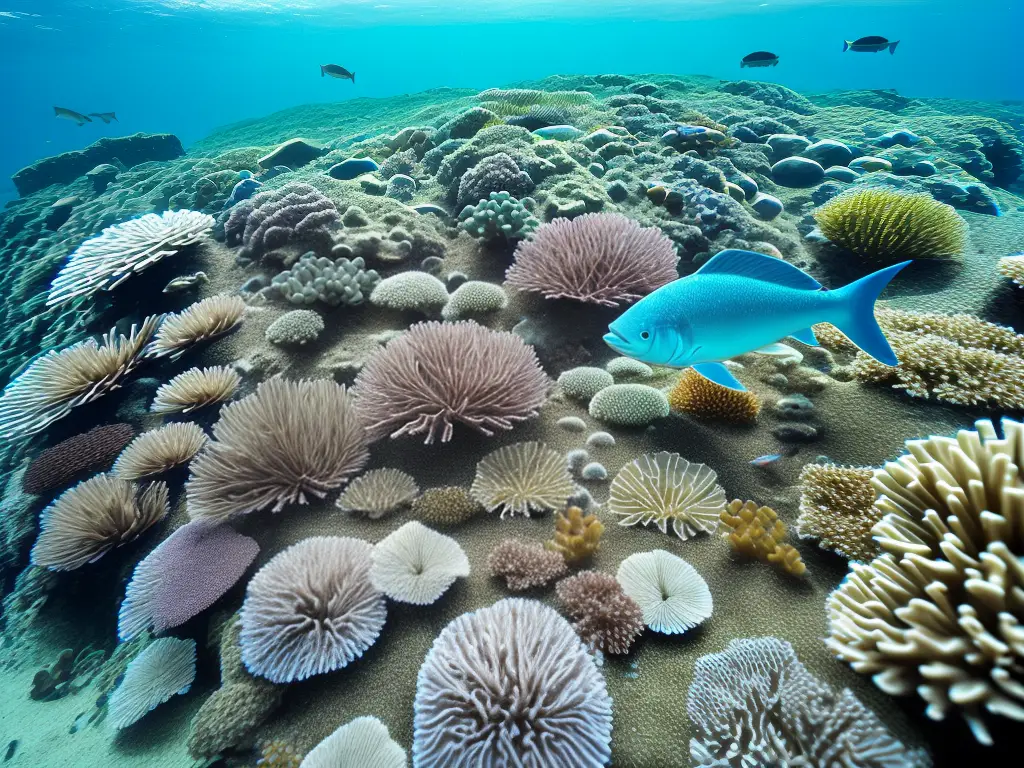
Selecting the Right Gear and Equipment for Saltwater Fishing
Research different types of saltwater fishing rods:
There are various types of saltwater fishing rods, each designed for specific fishing techniques and species. Some common types are spinning rods, casting rods, trolling rods, and fly-fishing rods.
- Spinning rods: Ideal for novice anglers, as they are versatile and easy to use. Suitable for catching small to medium-sized fish.
- Casting rods: For advanced anglers, these are perfect for accurate bait placement and long-distance casting. Can be used for various fish species.
- Trolling rods: Specifically designed for trolling (fishing while the boat is in motion). These rods have strong resistance and are suitable for catching large fish species.
- Fly-fishing rods: Designed for fly-fishing techniques, these rods are lightweight, flexible, and ideal for surface fishing.
Research different types of saltwater fishing reels:
Different reels are necessary depending on the rod and technique used. The main types are spinning reels, baitcasting reels, conventional reels, and fly reels.
- Spinning reels: Easy to use and versatile, suitable for novices and pros, and compatible with spinning rods.
- Baitcasting reels: More advanced and deliver accurate casting. Ideal for experienced anglers, usually paired with casting rods.
- Conventional reels: Geared for heavy line and large fish species, perfect for deep-sea fishing, and usually paired with trolling rods.
- Fly reels: Designed specifically for fly-fishing, lightweight with a strong drag system, and paired with fly rods.
Choose the appropriate fishing line:
The line’s strength, durability, weight, stretch, and visibility play a crucial role. The main types are monofilament, braided, and fluorocarbon.
- Monofilament: Affordable, versatile, and suitable for different fishing techniques.
- Braided: Strong, thinner diameter with low stretch, great for deep-sea fishing.
- Fluorocarbon: High abrasion resistance, durable, and nearly invisible underwater.
Research saltwater fishing tackle:
Essential tackle includes hooks, weights, swivels, lures, and leaders.
- Hooks: Choose the appropriate size and style according to the targeted fish species.
- Weights and sinkers: Help stabilize the bait to the desired depth.
- Swivels: Prevents line twists and allows for a more natural bait movement.
- Lures: Artificial bait designed to mimic live prey. Research the type of lure that is most effective for your targeted fish species.
- Leaders: Protect the mainline from sharp teeth, rocks, and coral.
Targeted fish species and fishing location:
Based on your desired catch and location, you can now select the appropriate gear. For example, if you plan to target smaller fish in-shore, a spinning rod, spinning reel, monofilament line, and hooks appropriate for the targeted species would be a suitable setup.
Remember, it’s essential to choose gear suited for the environment you’re fishing in and the species you’re targeting. For specific recommendations, consult experienced anglers or local bait shops in the area you plan to fish.”
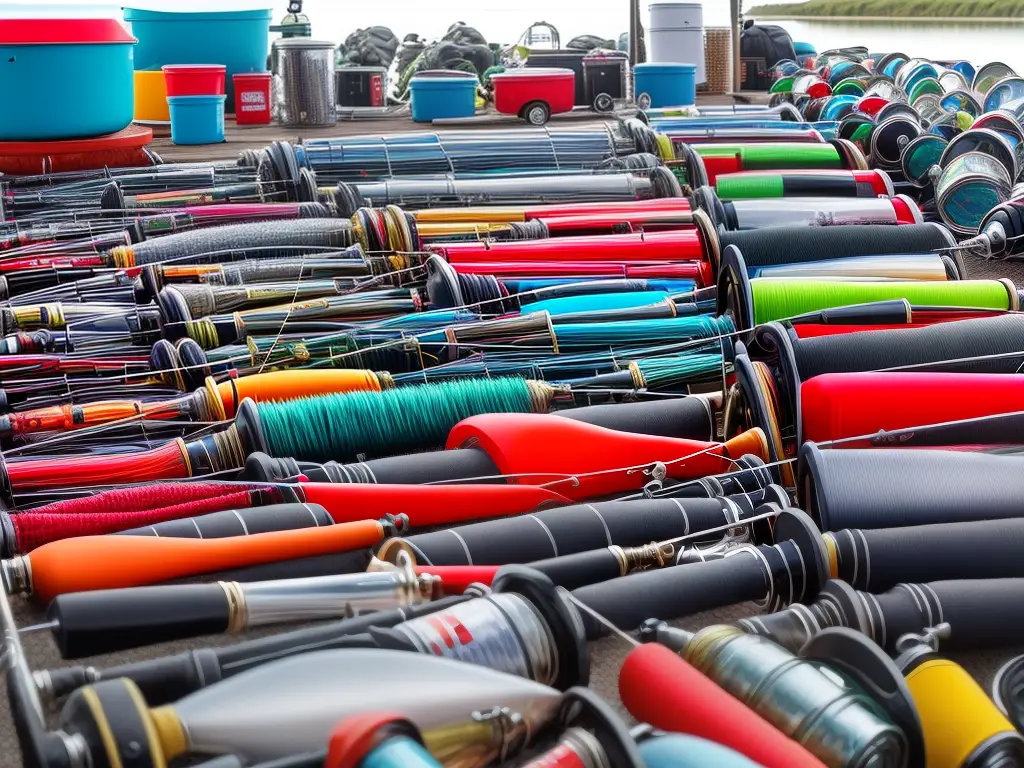
Saltwater Fishing Strategies: Knots and Rigs
To get started with saltwater fishing, it’s crucial to learn and master essential knots and rigs. This will ensure that your line remains strong and effective while fishing in various conditions and targeting different species.
Knots:
-
Palomar Knot:
The Palomar Knot is an easy-to-tie, strong knot that is best used with braided lines. It works well for connecting your line to lures, swivels, or hooks.
Steps to tie a Palomar Knot:
- Create a loop by doubling the line and place the loop through the eye of the hook or lure.
- Hold the hook or lure and the doubled line in one hand while making an overhand knot using the loop end in the other hand.
- Pull the overhand knot tight, then slide the loop over the hook, lure, or swivel.
- Pull both ends of the line to tighten the knot securely.
-
Uni Knot:
The Uni Knot is versatile and can be used for attaching your line to hooks, lures, or leaders. It works well with both mono and braided lines.
Steps to tie a Uni Knot:
- Run the tag end of the line through the eye of the hook or lure, then double back to create a loop alongside the standing line.
- Wrap the tag end around both the standing line and the loop 5-7 times.
- Wet the knot with saliva or water and slowly pull the tag end to tighten the wraps.
- Slide the knot towards the eye of the hook or lure and trim excess tag line.
Rigs:
-
Fish Finder Rig:
The Fish Finder Rig is a versatile and straightforward rig suitable for different bottom fishing situations. It keeps the bait close to the bottom and allows fish to take the bait without feeling the weight.
Steps to set up a Fish Finder Rig:
- Slide a fish-finder weight onto the main line. Choose a weight appropriate for current and depth.
- Tie a swivel onto the main line using a Palomar or Uni Knot.
- Cut a 12-36 inch leader (based on desired length) and attach one end to the swivel using a Uni Knot.
- Attach your hook to the leader’s other end, again using a Uni Knot.
-
Popping Cork Rig:
The Popping Cork Rig is ideal for shallow water fishing, usually used in estuaries and flats. It keeps the bait suspended off the bottom and creates noise and commotion to attract fish.
Steps to set up a Popping Cork Rig:
- Slide a popping cork onto the main line, making sure the line runs through the cork’s top hole.
- Tie a swivel to the main line under the popping cork using a Palomar or Uni Knot.
- Cut a 12-24 inch leader and attach it to the swivel using a Uni Knot.
- Attach your hook or jig head to the other end of the leader with a Palomar or Uni Knot.
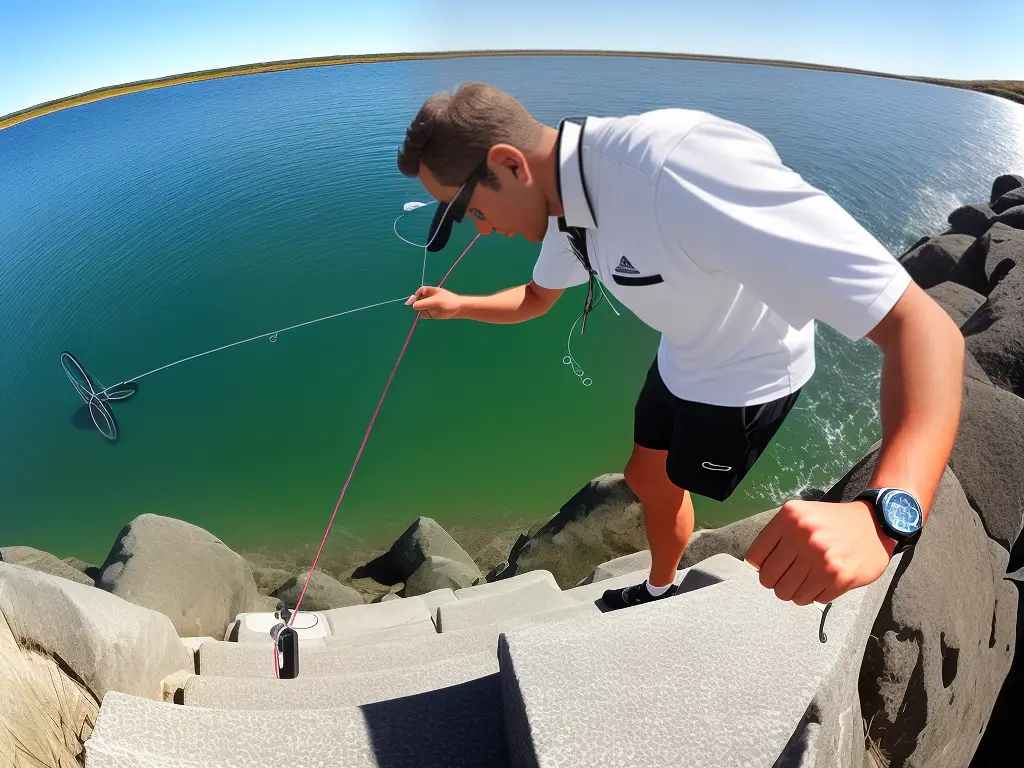
Saltwater Fishing Strategies: Bait and Lures
When it comes to saltwater fishing, selecting the appropriate bait and lures can be crucial for a successful catch. In this guide, we will be discussing the various types of live and artificial baits and lures, along with how to use them effectively depending on the fish species you are targeting.
1. Live Bait:
- Shrimp: This versatile bait works well for a wide range of fish species, including redfish, trout, and snook. To hook a shrimp, thread the hook through the tail, ensuring the point is exposed.
- Pinfish/Blue Runner: Popular choices for targeting larger predatory fish like grouper, snapper, and kingfish. To hook these fish, insert the hook through the back, just below the dorsal fin, ensuring it lies flat against the body.
- Squid: This bait is ideal for bottom-feeding fish like flounder and grouper. Cut squid into strips or whole pieces and thread onto the hook.
2. Artificial Lures:
- Jigs: These versatile lures can be used to target a variety of species, including redfish, seatrout, and snapper. Jigs typically consist of a weighted head and soft plastic or hair body, which create a lifelike swimming action when jigged or retrieved. Experiment with different jig styles, weights, and retrieval speeds to find what works best for your target species.
- Topwater Lures: These mimick baitfish swimming near the surface, attracting species like snook, tarpon, and striped bass. Topwater lures are most effective in low-light conditions and can be worked in a “walk the dog” or “popping” fashion to create surface disturbance and attract fish.
- Plugs: Plugs come in various shapes, sizes, and diving depths, making them an excellent option for targeting species like largemouth bass, redfish, and snook. Depending on the plug type, you can fish them at a chosen depth by varying your retrieve speed and twitching the rod tip to create a lifelike swimming action.
- Spoons: These simple, yet effective lures, imitate a single, injured baitfish, making them ideal for attracting predatory species like mackerel, bluefish, and amberjack. Spoons can be worked by casting and retrieving or trolling behind a boat.
3. Tips for Selecting and Using Bait and Lures:
- Match the hatch: Choose baits and lures that closely resemble the local prey species, both in appearance and size, for the fish you’re targeting.
- Consider environmental conditions: The effectiveness of your bait or lure may depend on factors like water clarity, current, and temperature.
- Experiment: Don’t be afraid to try different baits and lures until you find what works best for the species, location, and time of year you’re fishing.
- Pay attention to presentation: The way you present your bait or lure can make a big difference in enticing fish to bite. Practice different retrieval speeds, techniques, and depths to find what triggers the fish’s interest.
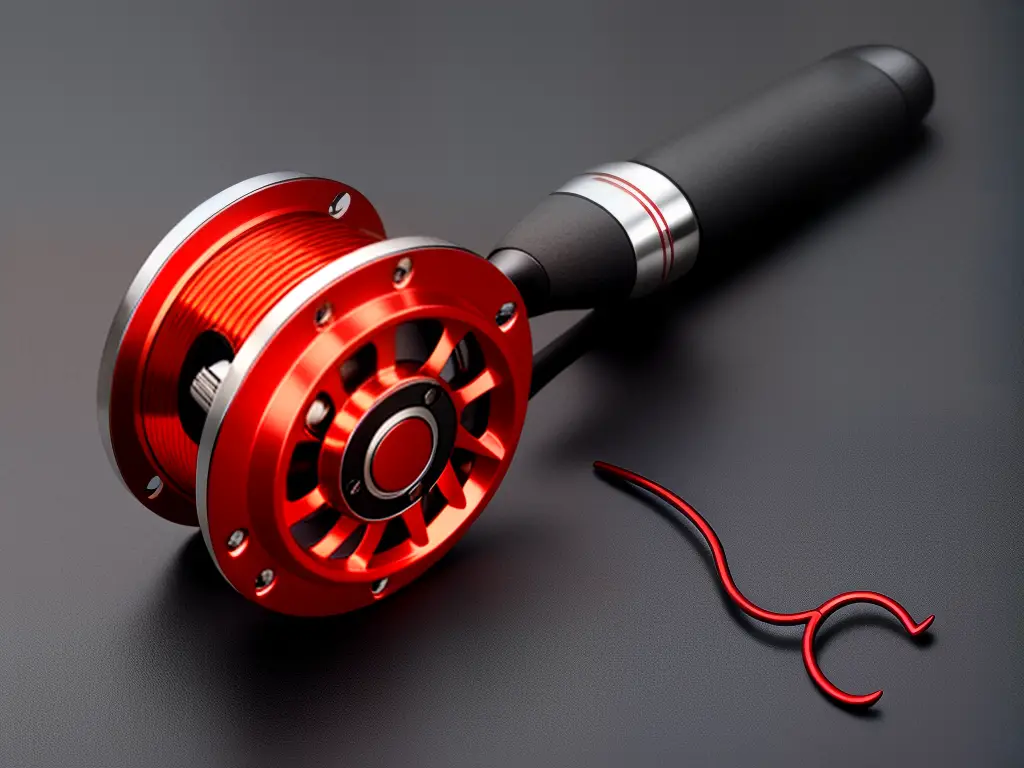
Saltwater Fishing Strategies: Trolling, Bottom Fishing, Jigging, and Surf Fishing
Saltwater fishing offers a wide variety of techniques, each suitable for different species, locations, and conditions. In this guide, we will explore four popular saltwater fishing techniques — trolling, bottom fishing, jigging, and surf fishing — and provide instructions on how to effectively practice each technique.
1. Trolling
Trolling is a popular technique for targeting species such as tuna, marlin, dorado, and kingfish. It involves pulling lures or baited hooks behind a moving boat.
- Choose suitable lures or bait for your target species. Trolling lures typically include plugs, skirts, or spoons. You can also troll with live or dead bait.
- Rig your lures or baits to your fishing line using leaders and clips. Wire leaders are recommended for toothy species.
- Adjust your trolling speed to match the swimming behavior of your target species. Generally, speeds between 4 to 10 knots are effective.
- Deploy multiple lines with varying lengths and depths to increase your chances of attracting fish.
- Monitor your rod tips for signs of a bite. When a fish strikes your lure, set the hook by firmly reeling in the slack and lifting the rod tip.
2. Bottom Fishing
Bottom fishing targets species that inhabit the seafloor, such as grouper, snapper, and cod. This technique involves dropping bait or lures to the bottom and waiting for fish to take the bait.
- Choose the appropriate bait or lures for your target species. Common bottom fishing baits include cut bait, squid, crabs, or crustaceans.
- Rig your bait on a suitable bottom fishing rig, such as a sliding sinker rig, fishfinder rig, or three-way rig. Use sinkers to keep your bait close to the bottom.
- Identify a promising bottom structure or fish-holding area using fish finders, GPS coordinates, or local knowledge.
- Lower your bait to the bottom and maintain contact with the seafloor.
- Watch your rod tip and line for signs of fish activity. When you feel a bite, reel in the slack and set the hook by lifting your rod tip.
3. Jigging
Jigging targets a wide variety of species, including amberjack, trevally, and snapper. This technique involves rapidly moving a jig up and down in the water column to imitate an injured baitfish.
- Choose a suitable jig for your target species and water depth. Jigs range from small, lightweight bucktails to heavy, lead-headed jigs.
- Rig your jig with an appropriate leader, such as fluorocarbon or wire, to withstand abrasions and toothy fish.
- Identify a promising fishing spot, such as a reef, wreck, or fish-holding structure.
- Lower your jig to your desired depth, then reel in any slack before starting your jigging action.
- Impart a lifelike action to your jig by rapidly lifting your rod tip, then lowering it while maintaining slight tension on the line. Repeat this process at varying speeds and depths.
- Stay alert for subtle strikes as a fish may hit the jig on the fall. When you detect a bite, set the hook by quickly lifting your rod tip and reel in the fish.
4. Surf Fishing
Surf fishing targets species that come close to the shore, such as stripers, red drum, or bluefish. This technique involves casting your bait or lures from the shoreline or a pier.
- Choose appropriate bait or lures for your target species. Popular surf fishing baits include clams, shrimp, or mullet, while lures can include plugs, spoons, or soft plastics.
- Rig your bait on a suitable surf fishing rig, such as a fishfinder rig, high-low rig, or Carolina rig.
- Identify a productive area for surf fishing, such as a beach with visible fish-holding structures like sandbars, troughs, or rip currents.
- Cast your bait or lure beyond the breakers, aiming for deep pockets, structure, or signs of fish activity.
- Monitor your rod tip and line for signs of fish activity. When you detect a bite, reel in the slack, and set the hook by lifting your rod tip.
By practicing these techniques and adapting them to your specific fishing conditions and target species, you will significantly increase your chances of success in saltwater fishing. Remember to follow local regulations and practice catch and release when necessary to protect our marine ecosystems.
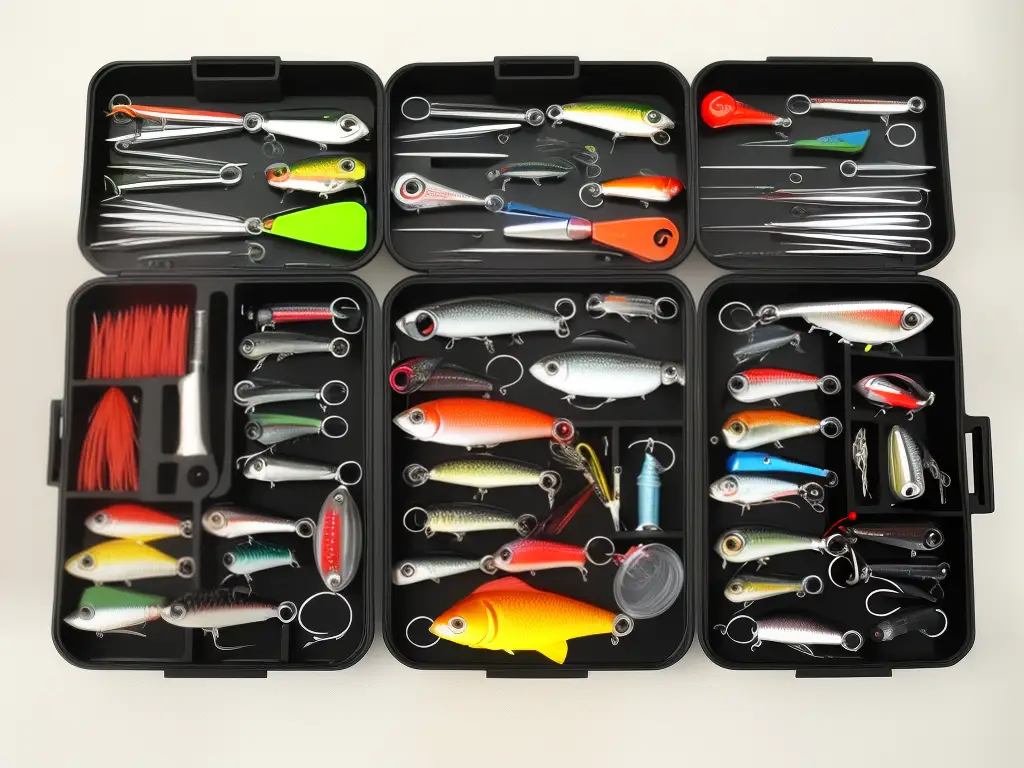
Reading Tide and Currents for Saltwater Fishing
Study Tide Charts: The first step in understanding tides and currents is to study the tide charts for the area where you plan to fish. Tide charts will show the times and heights of high and low tides. You can generally find these charts online or at local tackle shops and marinas.
Identify the Timing of Tides: In most coastal areas, there are two high tides and two low tides each day. The times of these tides change slightly each day. Note the times of the high and low tides for the days you plan to fish and plan your trips accordingly. Fishing is generally more productive during the hours surrounding the changing tides.
Understand the Effects of Tides on Fish Behavior: Tides cause water to move, which often leads to fish becoming more active. As the tide rises, fish will often move into shallow areas to feed. Conversely, as the tide falls, fish will move to deeper water. This knowledge can help you determine the most productive fishing spots during specific tide phases.
Consider the Strength of the Current During Different Tide Phases: Different tide phases also affect the strength of the current. During a strong current, fish may have a harder time moving against the flow of water, making them less active. On the other hand, a weaker current can allow fish to more easily feed and travel freely. Moderate currents tend to be the best conditions for saltwater fishing.
Choose the Appropriate Fishing Locations: Use your knowledge of tides and currents to choose the best fishing spots. During an incoming or high tide, focus on fishing in shallow areas, such as flats or near structures where fish may be feeding. During an outgoing or low tide, target deeper areas or channels where fish are likely to be found.
Adjust Your Techniques Based on Tides and Currents: Your fishing techniques should also reflect the tide and current conditions. For example, during an incoming tide with a strong current, you may need to use heavier weights to keep your bait in place. Similarly, you may need to adjust your bait selection based on the tidal phase, targeting species that are more likely to be active during that period.
Record Your Success: As you fish under different tide and current conditions, keep a journal of your success, noting the date, time, tide phase, and characteristics of the successful fishing spots. This information can help you refine your fishing strategy and improve your chances of success during future trips.
By understanding tides and currents, and applying this knowledge to your saltwater fishing strategy, you can greatly improve your chances of having a successful day on the water. Happy fishing!
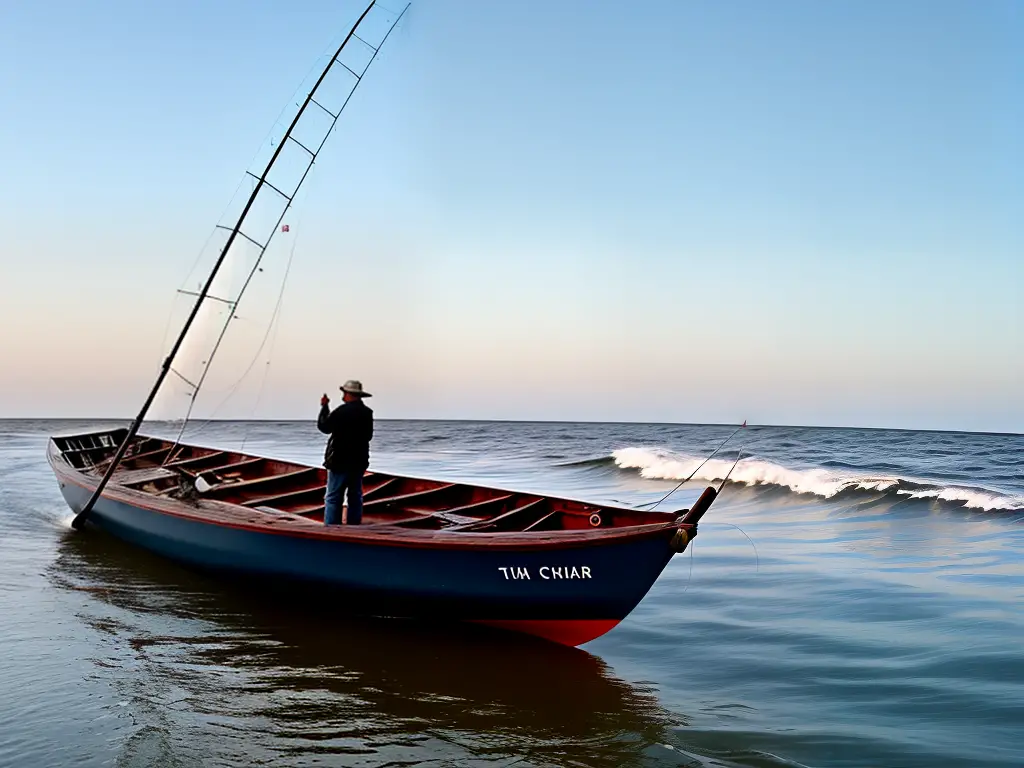
Saltwater Fishing Strategies: Weather and Fish Behavior
Understanding how weather conditions affect fish behavior can significantly improve your saltwater fishing experience. By adapting your fishing techniques based on the current weather conditions, you can optimize your results and have a more enjoyable time on the water. Here are some key factors to consider when planning your fishing strategies:
1. Temperature: Fish are ectothermic, meaning their body temperature is regulated by the surrounding environment. Hence, water temperature plays a crucial role in influencing fish activity. Colder temperatures may cause fish to become less active and reside in deeper waters, while warmer temperatures can make fish more aggressive and likely to feed in shallow regions.
Strategy: Monitor the water temperature and target your fishing accordingly. During cold conditions, try fishing in deeper waters and using slow-moving baits. On warmer days, explore shallow regions and use faster-moving lures to entice more aggressive fish.
2. Barometric Pressure: Changes in barometric pressure can impact fish behavior significantly. A drop in pressure usually indicates an approaching storm or bad weather, causing fish to become more active and feed heavily before the storm. Conversely, a rising pressure typically means improving weather conditions, making fish less active and not feeding as aggressively.
Strategy: Keep an eye on the barometric pressure and plan your fishing trip accordingly. When the pressure is dropping, focus on using fast-moving lures and fish closer to the surface to take advantage of increased feeding activity. After a storm or when the pressure rises, try using slower-moving baits and fish at deeper depths to locate less active fish.
3. Wind Direction: Wind can affect both water currents and baitfish movement, which in turn influences fish behavior. Offshore winds (blowing from the land toward the water) can lead to water upwelling and cooler temperatures, while onshore winds (blowing from the water towards the land) can bring warmer water and baitfish closer to the shore.
Strategy: Use the wind direction to your advantage by positioning yourself accordingly. On days with offshore winds, focus on fishing in deeper waters. When faced with onshore winds, concentrate on shoreline areas, casting into the wind, and using lures that mimic baitfish.
4. Tides: Tidal movement greatly impacts fish behavior, especially in coastal areas. Incoming tides bring an influx of nutrients and baitfish, creating feeding opportunities for fish. Conversely, during outgoing tides, fish tend to relocate to deeper water as their food sources move with the receding waters.
Strategy: Plan your fishing trips around the tide cycles. Focus on the first two hours of an incoming tide and the last two hours before high tide when fish are most active. Be prepared to change your fishing location and techniques during outgoing tides to target deeper waters.
5. Rain: Light rain can help increase fish activity by providing cover for them to feed more comfortably and can also wash insects and other potential food into the water. However, heavy rain can lead to decreased visibility, making it more challenging for fish to locate food sources.
Strategy: Don’t let light rain deter you from fishing. On such days, use lures that create noise or vibrations to help fish locate your bait. If it’s raining heavily or the water becomes too murky, consider using brightly colored or scented baits to help attract fish.
In summary, being aware of the weather conditions and understanding how they influence fish behavior can greatly enhance your saltwater fishing experience. Be prepared to adapt your fishing techniques according to the temperature, barometric pressure, wind, tides, and rain for optimal results. Happy fishing!
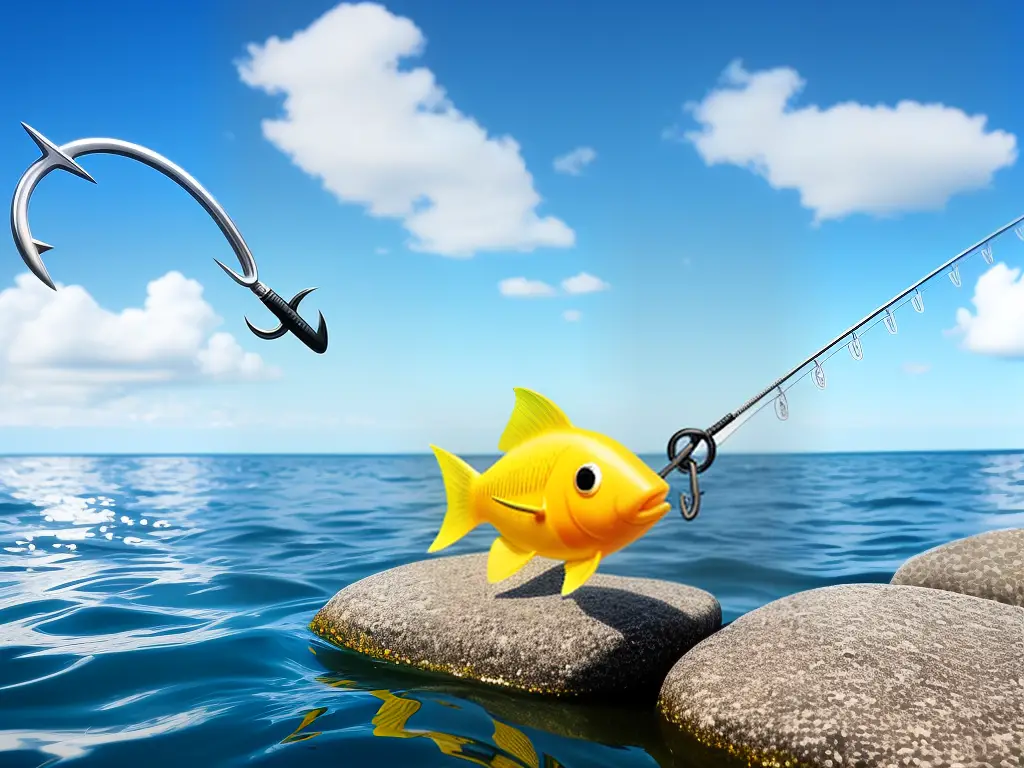
Saltwater Fishing Strategies: Safety, Regulations, and Catch-and-Release Practices
Safety Precautions:
- Wear a life jacket: Always wear a properly fitted personal flotation device (PFD) when on a boat or near the water, especially when fishing in rough conditions.
- Check weather conditions: Keep an eye on the weather forecasts while planning a fishing trip, and avoid going out in storms, strong winds, or rapidly changing conditions.
- Stay prepared with a first-aid kit: Accidents can happen, so always carry a well-stocked first-aid kit in your tackle box or gear bag.
- Protect yourself from the sun: Wear protective clothing, sunglasses, and use sunscreen to shield your skin from harmful UV rays.
- Bring necessary communication devices: Carry a cell phone, VHF radio, or satellite phone so that you can quickly communicate with emergency services if needed.
- Stay hydrated and well-fed: Bring plenty of water and snacks to maintain your energy and hydration levels throughout the day.
Local Fishing Regulations:
- Obtain proper fishing licenses: Ensure you have the necessary state and/or federal fishing licenses. Licenses can often be purchased online, at local tackle shops, or from park offices.
- Know the fishing seasons: Research your target species’ open seasons, which vary by location and may change annually for conservation purposes.
- Be aware of size and creel limits: Each species may have size limits and daily possession limits, which are designed to maintain sustainable populations. Get familiar with these regulations before you head out on the water.
- Respect restricted areas: Some marine areas may be designated as protected or off-limits to fishing for environmental reasons. Always consult local maps and regulations to ensure you are fishing legally.
Catch-and-Release Practices:
- Use appropriate gear: Employ circle hooks and barbless hooks, as they are more likely to hook the fish in the mouth, reducing potential injury and stress. Use a net made out of knotless, rubberized mesh to minimize damage to the fish’s scales and slime coat.
- Minimize stress and handling time: Fight the fish quickly and firmly, and always have pliers or a de-hooking device ready to shorten the time the fish is out of the water.
- Handle fish gently: If possible, avoid lifting the fish out of the water. Keep your hands wet when touching the fish and avoid touching the gills.
- Remove the hook carefully: If the hook is difficult to remove or embedded deep within the fish, use pliers or a de-hooking device. Cut the line close to the hook when necessary, as many hooks will rust out or be expelled by the fish over time.
- Revive the fish before release: Gently hold the fish in the water and move it back and forth to help circulate oxygen through its gills. Release the fish only when it appears strong and able to swim away.
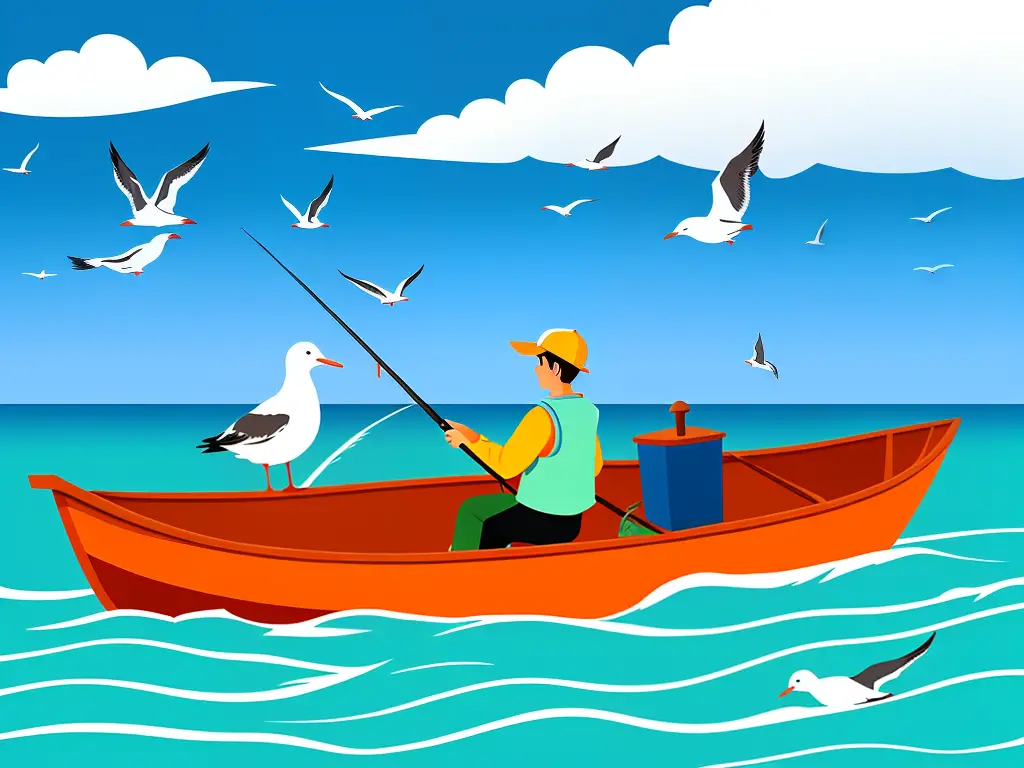
By arming yourself with the necessary knowledge and tools, you can make the most out of your saltwater fishing adventures. As you continue to learn and apply these strategies, you’ll gain a deeper understanding of saltwater fishing and develop your skills to become an adept angler. Remember, practice makes perfect, and the more time spent on the water, the better your chances of reeling in that prized catch. So get out there, stay safe, and enjoy the bountiful opportunities that saltwater fishing has to offer.